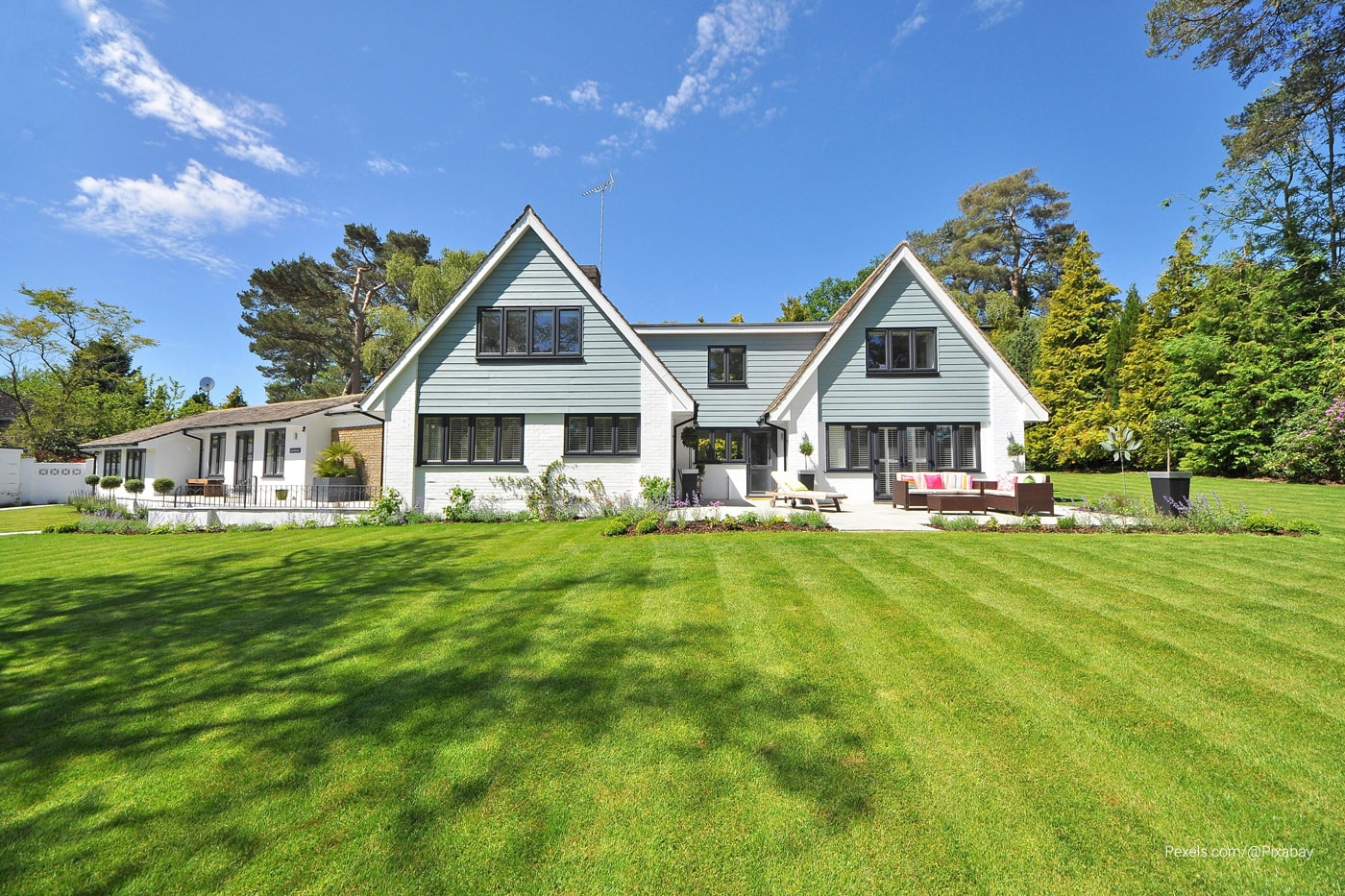Sustainable landscaping is more than just an environmentally friendly choice—it’s a smart financial decision.
Homeowners looking to increase property value while reducing maintenance costs and environmental impact should consider implementing eco-friendly landscaping techniques. From native plant gardens to water-efficient irrigation and sustainable hardscaping, these green strategies provide measurable economic benefits.
But how exactly does sustainable landscaping influence property value? Let’s explore.
Contents []
The Economic Impact of Green Landscaping
-
Native Plant Landscaping: A Win for Homeowners and the Environment
The Cooling and Energy-Saving Effects of Tree Cover
Water-Efficient Irrigation: Smart Landscaping for Savings
Sustainable Hardscaping: Beauty Without Waste
Financial Incentives and Market Trends
Making the Transition to Sustainable Landscaping
Sustainable Landscaping and Real Estate Marketability
Long Term Investment with Sustainable Landscaping

The Economic Impact of Green Landscaping
Research consistently shows that sustainable landscaping contributes to property value appreciation. A study published in the Journal of Environmental Management found that properties adjacent to green infrastructure saw a 5-15% increase in value compared to similar homes without such features. This is because green spaces improve curb appeal, reduce stormwater runoff, and contribute to a healthier living environment.
Additionally, a Journal of Sustainable Real Estate study highlighted that homes with sustainable landscaping features—such as native plant gardens and rainwater harvesting systems—experienced a 6-11% increase in resale value. Buyers were willing to pay a premium for properties with low-maintenance, water-efficient landscaping, and these homes spent less time on the market.
Native Plant Landscaping: A Win for Homeowners and the Environment
One of the simplest ways to adopt sustainable landscaping is by integrating native plants. Unlike exotic species, native plants require less water, fertilizer, and pesticides, which translates into lower maintenance costs for homeowners. According to the U.S. Environmental Protection Agency (EPA), native plant landscaping can reduce water consumption by up to 60% compared to traditional lawns. Additionally, biodiversity increases with native plants, enhancing overall property enjoyment and ecological balance.
The Cooling and Energy-Saving Effects of Tree Cover
Strategically planting trees is another effective sustainable landscaping strategy. A study in Ecological Economics revealed that a 10% increase in tree cover was associated with a 3-5% increase in residential property values. Properties with mature trees even sold for an average of $7,130 more than those without. Beyond aesthetics, tree cover provides a cooling effect, reducing energy consumption and cutting summer cooling costs by up to 30%.
.
Water-Efficient Irrigation: Smart Landscaping for Savings
Water is a precious resource, and conserving it is a major focus of sustainable landscaping. Traditional sprinkler systems can be wasteful, but modern irrigation solutions, such as drip irrigation and rainwater harvesting, ensure that plants receive the right amount of water without excess runoff. Sustainable landscaping practices can lower water bills and protect against drought-related landscaping damage, adding further financial benefits to homeowners.

Sustainable Hardscaping: Beauty Without Waste
Hardscaping elements—such as walkways, patios, and retaining walls—can be designed using recycled or locally sourced materials. Sustainable hardscaping reduces the heat island effect, improves stormwater drainage, and minimizes long-term maintenance. This type of landscaping is particularly attractive to environmentally conscious buyers who value both aesthetics and sustainability.

Financial Incentives and Market Trends
Aside from direct property value appreciation, sustainable landscaping can offer financial incentives through tax credits and rebates in some regions. Homeowners making energy-efficient landscaping upgrades may qualify for local programs that offset initial investment costs. As homebuyers become increasingly eco-conscious, demand for sustainable properties continues to rise, making these investments even more valuable.
Making the Transition to Sustainable Landscaping
The biggest concern for many homeowners is the perceived cost of switching to sustainable landscaping. However, the transition doesn’t have to be expensive. Here are some cost-effective strategies:
- Start Small: Replace a portion of traditional lawn with drought-resistant plants.
- Use Mulch: This simple step conserves moisture and reduces weeds.
- Install a Drip Irrigation System: Saves water while keeping plants healthy.
- Choose Permeable Paving: Reduces runoff and improves drainage.
- Consider Government Incentives: Look for grants or rebates for sustainable landscaping initiatives.
For those planning more extensive landscaping renovations, finding the right budget is crucial. Learn more about finding the right renovation budget to ensure cost-effective planning.
Sustainable Landscaping and Real Estate Marketability
Eco-friendly landscaping isn’t just about boosting property values—it also impacts a home’s marketability. Buyers are looking for homes that offer both beauty and efficiency, and properties with sustainable landscaping often sell faster. Additionally, homes with green infrastructure tend to fare better in real estate negotiations. In some cases, sellers may encounter contingent offers, where buyers add conditions related to environmental certifications or landscaping assessments before finalizing the deal.
Long Term Investment with Sustainable Landscaping
Sustainable landscaping is a long-term investment that benefits homeowners financially and environmentally. By incorporating native plants, water-efficient irrigation, tree cover, and sustainable hardscaping, property owners can enjoy higher resale values, lower maintenance costs, and improved energy efficiency. With market trends favoring eco-conscious homes, now is the perfect time to embrace sustainable landscaping.



